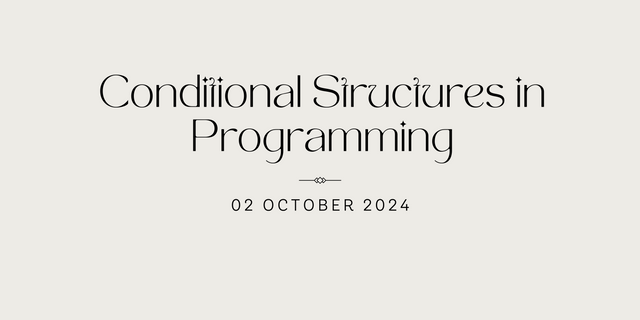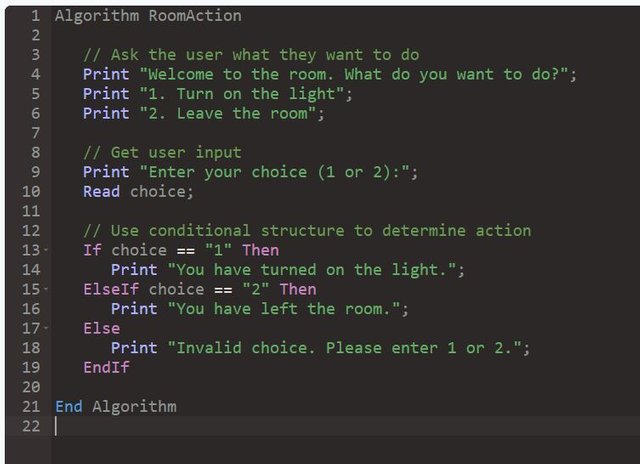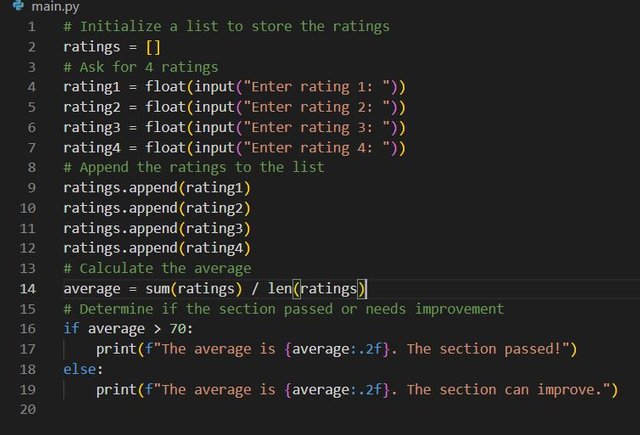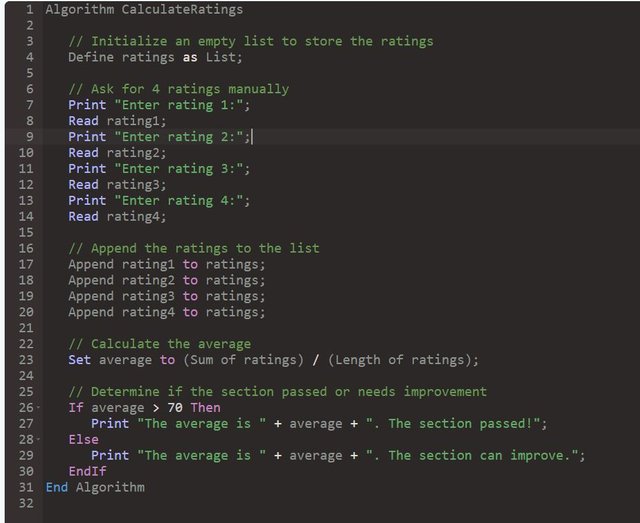The Importance of Conditional Structures in Programming
Introduction

Image Source: Canva Template
In the world of programming, decision making is crucial for creating responsive aplications. One of the most powerful tools at a programmer's disposal is the conditional structure. This allows a program to execute different blocks of code based on whether certain conditions are met By making conditional structures, developers can build aplications that adapt to user input and make choices base on specific criteria. 🤖💻
Understanding Conditional Structures 🧠
Conditional structures are fundamental constructs in programming that alow to evaluate conditions and decide what action to take next. For example, in Python, we can use if, elif, and else statements to control the flow of our program based on the user's input or other variable states This makes our programs dynamic and interactive. ⚙️
Everyday Situations Using Conditional Structures (Examples from Using Steemit) 🌐
Receiving Notifications 🔔
As a user on the Steemit platform, receiving timely notifications is essential for staying engaged. Conditional structures can be utilized to filter notifications based on their type. if you receive an upvote, a comment, or a mention, you want to see a specific notification for each case. 📢
Code Example 💻
# Simulating notification types notification_type = "upvote" # Change this to "comment", "mention", etc. if notification_type == "upvote": print("You have received an upvote!") elif notification_type == "comment": print("You have a new comment!") elif notification_type == "mention": print("You have been mentioned in a post!") else: print("No new notifications.")Output:
You have received an upvote!This example shows how conditional structures help you respond appropriately to different user interactions, ensuring that you never miss important updates on the platform. ✅
Tag Formatting Feedback 🏷️
On Steemit, using the correct format for tags is crucial for content discoverability. If a user enters tags in uppercase letters, it’s important to provide immediate feedback so they can correct it. For example, you could prompt users to enter tags in lowercase to ensure better visibility. 🔤🔍
Code Example 💻
# Simulating tag input tags = ["STEEM", "BLOCKCHAIN", "PYTHON"] # Example: Tags entered by the user # Check for uppercase tags if any(tag.isupper() for tag in tags): print("You should use tags only in lowercase.") else: print("Tags are formatted correctly.")Output:
You should use tags only in lowercase.This approach enhances user experience by ensuring that tags are properly formatted, which can lead to better post visibility and engagement. 📈
Programming Challenge: Interactive Room Program 🚪💡
In this challenge, I created a simple Python program that interacts with users by asking them what they want to do in a room. The options include turning on the light or leaving the room. 💡🚶♂️
Code Example 💻
Here’s the code for the interactive room program:
If you are not familiar with Python, here is the pseudocode version.
Program Output 🎮
Programming Challenge: Average Rating Calculator 📊
In another challenge, I created a program to calculate the average of four ratings and determine if a user has passed or needs improvement. 🏅📉
Code Example 💻
Here’s the code for the average rating program with python:
If you are not familiar with Python, here is the pseudocode version.
Program Output 🎮
Conclusion 🎯
Conditional structures are essential tools in programming that empower developers to create interactive and adaptive applications. By understanding and utilizing these structures, programmers can significantly enhance user experience and application functionality. Whether working on engaging platforms like Steemit or developing personal projects, the ability to make decisions based on user input is invaluable. 💡👨💻
Try It Yourself 🧑💻
If you’re interested in trying your hand at programming with conditional structures, check out Gitpod to open any project, create a main.py file, and write the code provided in this blog. Run your code in the terminal using the command python main.py.
My introduction post on Steemit: link
I want to invite @charles10 , @shadow04 and @murni20 to join the contest.
About the Author
👋 Hi, I’m Kafio!
Software Engineer | Data Science Enthusiast | Trading Buff | Development Geek | Computer Science Lover 💻📊📈
I’m passionate about exploring the intersection of technology and innovation, with a special interest in data science, trading, and software development. Whether it’s diving into the latest in computer science or developing new projects, I’m always excited to learn and share insights. 🚀
I also love to travel
Got questions or just want to connect? Feel free to reach out to me at: [email protected] 🌟









Upvoted! Thank you for supporting witness @jswit.
the post is shared on Twitter: Twitter Link.
Thank you @eliany for the support.
I love the passion in your writing!
I always want to improve my writing